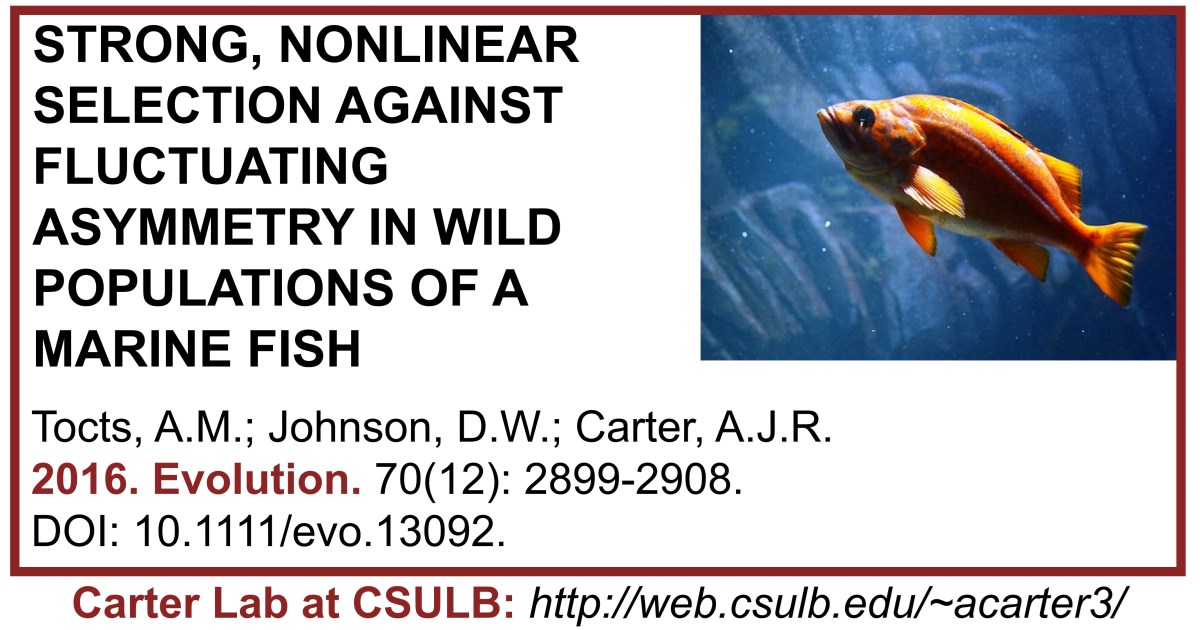ABSTRACT:
Theoretical links between fluctuating asymmetry (FA) and fitness have led many to use FA as a proxy for average fitness. However, studies examining whether asymmetry actually correlates with individual fitness in wild populations are relatively rare and often use simple measures of association (e.g., correlation coefficients). Consequently, the pattern of selection on asymmetry in the wild is seldom clear. We examined selection on FA of pectoral fin morphology in two wild populations of a marine fish (the kelpperch; Brachyistius frenatus). As expected, variance in signed FA in each initial sample was significantly greater than that found in the surviving population, indicating selection against FA. Our estimate of the fitness surface confirmed perfect symmetry as the phenotypic optimum and indicated strong, nonlinear selection against asymmetry. No difference in the form of selection was detected between populations. However, the level of FA in the initial samples varied among populations, leading to an overall difference in the level of selective mortality. Our results suggest that selection on asymmetry in wild populations may be strongly nonlinear, and indicate that the demographic costs of asymmetry may play a substantial role in the dynamics of populations.
